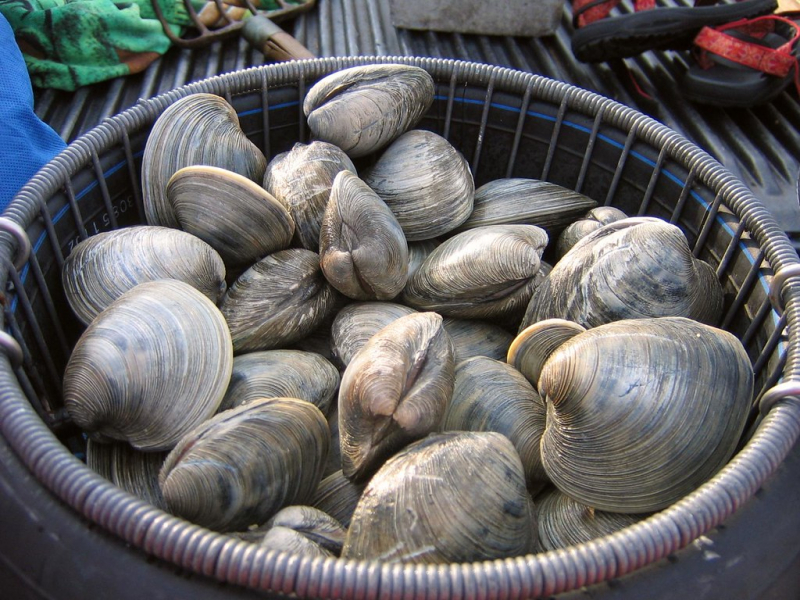Quahog

Quahogs - these hefty bivalves are like the Dwayne Johnsons of the mollusk world – big, strong, and with a shell that could double as a smartphone case (if smartphones were made of clam shells). They're also pretty tasty, making them stars of chowders, clam bakes, and endless seafood puns.
Quahogs chill along the coasts of North America, from the chilly waters of Canada to the sunny shores of Florida. They like to burrow in sandy or muddy bottoms, where they spend their days filtering food and napping. It's like they've mastered the art of blending in, creating a cozy home within the sand or mud, where they can peacefully filter the surrounding water for their meals.
These guys are filter feeders, sipping plankton and microscopic goodies from the water. They've set up a tiny seafood buffet at their doorstep, using their siphon to draw in water and extract nutrients.
Quahogs have a unique feature – growth rings on their shells. These rings can give an estimate of their age, with some living for several decades. It's like they're the wise elders of the underwater community, silently recording the passage of time.
Quahogs come in different sizes, from littlenecks (small) to cherrystones (medium) and topnecks (large). Each size has its culinary use, making them versatile additions to seafood dishes. It's like they're the multi-sized players in the world of clam cuisine. People enjoy quahogs for their succulent meat, often used in clam chowder, stuffed clams, or clam pasta.
In a nutshell, quahogs are the sedentary but savory clams that call the Atlantic coastal waters home. With their sturdy shells, filter-feeding habits, and versatile sizes, they contribute to the ecological balance of their habitat and the delicious seafood offerings enjoyed by seafood enthusiasts along the coast.















